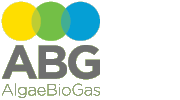Main menu
You are here
Project Overview
AlgaeBioGas project is focused to market introduction of algal-bacterial treatment of biogas digestate and feedstock production, an innovative technology which has significant economic and environmental benefits to biogas operators. The project is co-founded by the Eco-innovation Initiative of the European Union.
Within AlgaeBioGas project we are setting-up the first application as a demonstration centre and preparing all prefabricated technology, organization and marketing tools to market replication projects. The technology demonstration centre will not only be able to demonstrate the technology in full size at a demanding customers site, but also provide on-site support for customer's testing, analysis, evaluation, training and other activities required as part of a complex project.

Algal-bacterial treatment of biogas digestate will be introduced to the market. Using algae we can recycle CO2 emissions and nutrients contained in the biogas digestate. Excess heat can also be productively used. Treated digestate is of such quality that it can be reused or released to the environment. Resulting biomass can be used as biogas substrate, possibly after extraction of specific components in biorefinery.
Classical biological (bacterial) waste water treatment successfully reduces the quantities of organic substances at the cost of significant CO2 emissions and significant energy consumption for aeration. Mineral nutrients, flushed with the liquid phase of digestate, are lost in the bacterial sludge which is frequently deposited, incinerated or discharged to the environment.
Algae hold a great potential because of their high growth rate, easy production, better utilization of sunlight compared to conventional plants, shorter lifecycles and independence from fertile agricultural land. Biogas plants are rich sources of mineral nutrients, CO2 and heat. By algal recycling we can close material cycles, provide feedstock for bio-refining various high value products and decrease competition between biogas and food use of agricultural crops.
A demonstration centre of this technology will be established and operated at one of the project partners site and will demonstrate the technology in different working regimes, measure the operating characteristics of the system, measure environment impacts, provide the LCI data in a realistic set-up and show the installation to the potential customers to enable repeated installations.
Other work packages are preparation for repetitive market application of the technology. The project manual will contain a set of documents in technical and marketing sense which represent a base for any repeated installation of the project at potential customer’s site. This project manual will include all collected data needed prepare a potential customer to accept the new innovative technology and procedures needed in project planning and implementation. Project manual will essentially define the skeleton of all future projects based on feasibility and LCA studies that will be made. Additionally marketing tools will be prepared for further penetration on the market, presentations and special events that serve the purpose of disseminating the environmental and economic benefits of the innovative technology to a wider European biogas market. These activities will also include recruitment of the partners that will be able to locally support such projects (both sales and implementation).
Environmental impacts of the technology include recycling of nutrients and CO2. The technology aims at complete recycling of nutrients that would otherwise be removed by liquid digestate, recycling of 10% of CO2 emitted by a biogas plant and reducing the emissions of CO2 for further 10% in wastewater treatment. In this process approximately 4% of biogas substrate will be replaced by algal biomass and further 4% of cellulose substrate would be used thus reducing needs for energy crops for 8%.




